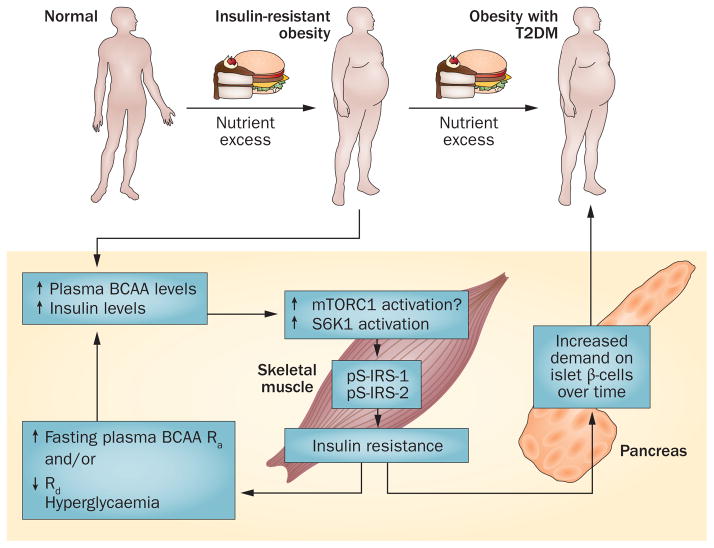Figure 2.
Persistent activation of mTORC1 links increased plasma BCAA levels to insulin resistance. According to this theory,59,109,110 excess nutrients that lead to obesity also result in frequent prandial increases in plasma levels of leucine, which together with insulin activate mTORC1 and S6K1. Persistent activation leads to serine phosphorylation of IRS-1 and IRS-2, which interferes with signalling and might target IRS1 for proteolysis via a proteasomal pathway.109,110 The resulting insulin resistance increases demand on insulin to dispose of excess glucose. Insulin resistance might increase the Ra of BCAAs from protein degradation. Long-term demand for insulin secretion, along with other factors such as lipotoxicity, might negatively affect the function of islets (for example, an initial compensatory increase in β-cell numbers and mass and islet mass, followed by apoptosis), ultimately resulting in a failure to produce sufficient quantities of insulin and leading to the onset of T2DM. Abbreviations: BCAA, branched-chain amino acid; IRS, insulin receptor substrate; mTORC1, mammalian target of rapamycin complex 1; Ra, rate of appearance; Rd, rate of disappearance; S6K1, ribosomal protein S6 kinase β1; T2DM, type 2 diabetes mellitus.

